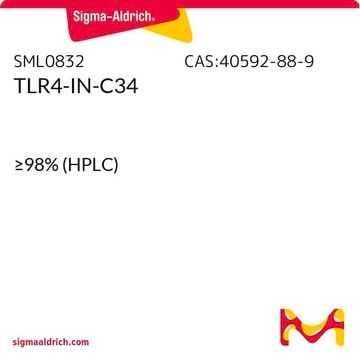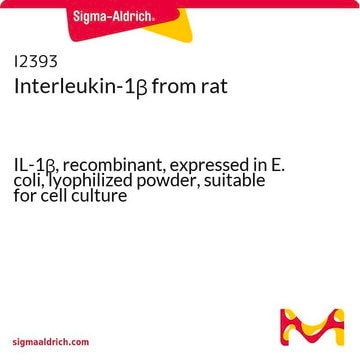614316
TAK-242
≥98% (HPLC), solid, TLR4 inhibitor, Calbiochem®
Synonym(s):
TLR4 Inhibitor, TAK-242, Ethyl-(6 R)-6-(N-(2-chloro-4-fluorophenyl)sulfamoyl)cyclohex-1-ene-1-carboxylate, Ethyl-(6R)-6-(N-(2-chloro-4-fluorophenyl)sulfamoyl)cyclohex-1-ene-1-carboxylate
About This Item
Recommended Products
product name
TLR4 Inhibitor, TAK-242, TAK-242; CAS 243984-11-4; is a cell-permeable compound that selectively binds to Cys747 of TLR4 and selectively disrupts its interaction with adaptor molecules TIRAP and TRAM.
Quality Level
Assay
≥98% (HPLC)
form
solid
manufacturer/tradename
Calbiochem®
storage condition
OK to freeze
protect from light
color
white to yellow-white
solubility
DMSO: 100 mg/mL
shipped in
wet ice
storage temp.
2-8°C
InChI
1S/C15H17ClFNO4S/c1-2-22-15(19)11-5-3-4-6-14(11)23(20,21)18-13-8-7-10(17)9-12(13)16/h5,7-9,14,18H,2-4,6H2,1H3/t14-/m1/s1
InChI key
LEEIJTHMHDMWLJ-CQSZACIVSA-N
General description
Biochem/physiol Actions
TLR4
Packaging
Warning
Reconstitution
Other Notes
Takashima, K., et al. 2009. Br. J. Pharmacol.157, 1250.
Li, M., et al. 2006. Mol. Pharmacol.69, 1288.
Yamada, M., et al. 2005. J. Med. Chem.48, 7457.
Legal Information
Storage Class Code
11 - Combustible Solids
WGK
WGK 2
Flash Point(F)
Not applicable
Flash Point(C)
Not applicable
Certificates of Analysis (COA)
Search for Certificates of Analysis (COA) by entering the products Lot/Batch Number. Lot and Batch Numbers can be found on a product’s label following the words ‘Lot’ or ‘Batch’.
Already Own This Product?
Find documentation for the products that you have recently purchased in the Document Library.
Customers Also Viewed
Our team of scientists has experience in all areas of research including Life Science, Material Science, Chemical Synthesis, Chromatography, Analytical and many others.
Contact Technical Service














